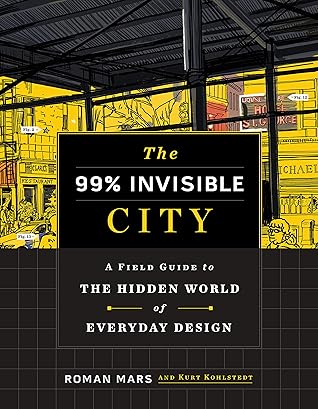More on this book
Community
Kindle Notes & Highlights
by
Roman Mars
Read between
October 5, 2020 - January 9, 2021
On city streets today, you can see the spectrum of safety colors that have been formalized and revised over the decades by the American National Standards Institute: RED: electric power lines, cables, and conduit ORANGE: telecommunications, alarm and signal lines YELLOW: gaseous or combustive materials including natural gas, oil, petroleum, and steam GREEN: sewers and drain lines BLUE: potable water PURPLE: reclaimed water, irrigation, or slurry lines PINK: temporary markings, unidentified facilities, or known unknowns WHITE: proposed excavation areas, limits, or routes
the city of Philadelphia is lousy with important era-defining monuments and plaques,
diagrams depicting their coverage areas looked like blobby plant or animal cells pressed up against one another—hence the name “cell phones.”
Vexillology is the study of flags, and like most fields where the stakes are quite low, opinions can be very intense.
even at a glance, though, it’s easy to see why respondents were unenthusiastic about this particular specimen.
Meanwhile, French writer Françoise Bastide and Italian semiotician Paolo Fabbri advocated another solution involving genetically engineering
bioluminescent cats that would glow in the presence of radioactivity.


